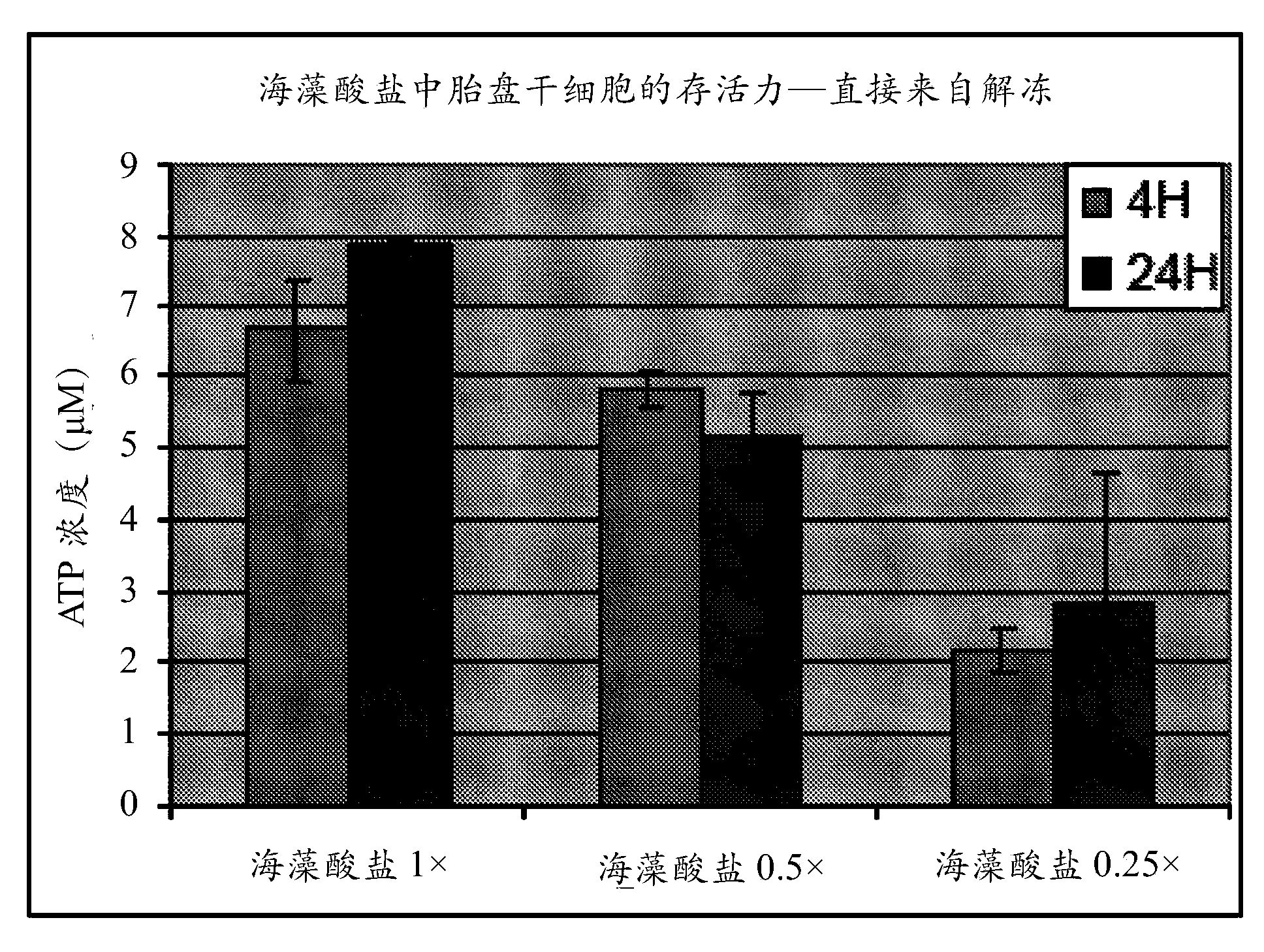Methods for cryopreserving and encapsulating cells
A cryopreservation and cell technology, applied in animal cells, embryonic cells, cell encapsulation, etc., can solve problems such as limiting the value of cells
- Summary
- Abstract
- Description
- Claims
- Application Information
AI Technical Summary
Problems solved by technology
Method used
Image
Examples
Embodiment 1
[0092] 7.1 Example 1: Viability of Encapsulated Placental Stem Cells
[0093] This example demonstrates that placental stem cells are viable when encapsulated in alginate.
[0094] 7.1.1 Store at 25°C and 37°C
[0095] Placental stem cells (5×10 5 cells / ml) were suspended in 0.75% alginate solution and added by dropping the cell / liquid alginate solution into CaCl 2 solution (1.5% w / v) for encapsulation. The encapsulated cells were stored at 25°C or 37°C for seven days, and cell viability was measured at various time points by labeling dead cells with propidium iodide and live cells with acetylmethoxy (AM) calcein.
[0096] The encapsulated placental stem cells were kept viable for 7 days at 37°C and 2 days at 25°C.
[0097] 7.1.2 refrigeration
[0098] Placental stem cells (5×10 5 cells / ml and 2 x 10 6 cells / ml) were suspended in 0.75% alginate solution and added by dropping the cell / liquid alginate solution into CaCl 2 solution (1.5% w / v) for encapsulation. Wil...
Embodiment 2
[0100] 7.2 Example 2: Encapsulation of cryopreserved placental stem cells
[0101] This example demonstrates that cryopreserved placental stem cells can be encapsulated post-thaw and they remain viable without the need to culture the post-thaw cells.
[0102] 7.2.1 Add alginate after thawing and encapsulate after thawing
[0103] Placental stem cells (7.5 × 10 6 cells / ml) were thawed and mixed 1:1 with 1.5% alginate (in PBS) without any intermediate culture steps. Cells were then encapsulated as described in Example 1. After encapsulation and without any intermediate culture steps, the (BioLife Solutions, Bothell, WA) storage solution was added to the encapsulated placental stem cells, and the cells were stored in syringes at 4°C for 7 days (i.e. the cells were stored at 100% middle). According to the manufacturer's instructions, use The viability of encapsulated placental stem cells was analyzed with a cell viability analyzer (Beckman Coulter, Brea, CA). Immedia...
PUM
 Login to View More
Login to View More Abstract
Description
Claims
Application Information
 Login to View More
Login to View More - R&D
- Intellectual Property
- Life Sciences
- Materials
- Tech Scout
- Unparalleled Data Quality
- Higher Quality Content
- 60% Fewer Hallucinations
Browse by: Latest US Patents, China's latest patents, Technical Efficacy Thesaurus, Application Domain, Technology Topic, Popular Technical Reports.
© 2025 PatSnap. All rights reserved.Legal|Privacy policy|Modern Slavery Act Transparency Statement|Sitemap|About US| Contact US: help@patsnap.com


